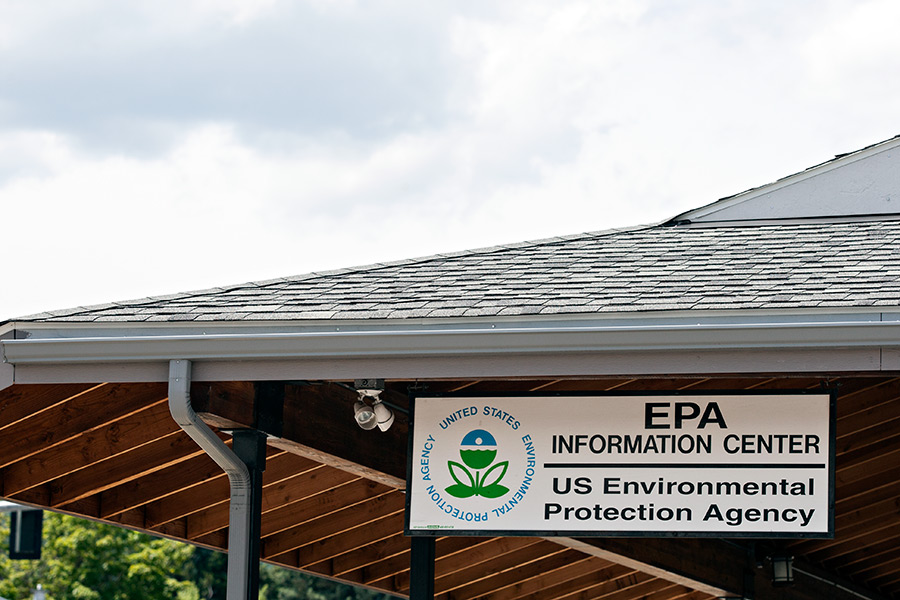Members of a five-person team charged with overseeing the cleanup and management of an asbestos-contaminated Superfund site in Libby met Sept. 7 for the fifth time, with discussions ranging from the site’s future to an unfilled liaison position mandated by state law.
The team was established during the 2017 Montana Legislature in Senate Bill 315 to provide oversight of the Libby Asbestos Superfund site as the state Department of Environmental Quality prepares to assume management of the site by January 2020, taking the reigns from the U.S. Environmental Protection Agency.
Hundreds of people have been killed and thousands sickened following decades of exposure to asbestos from the now-shuttered W.R. Grace and Co. mine in Libby, once the lifeblood of the community as workers filled lucrative jobs mining asbestos-laced vermiculite ore, then carried the dust home on their clothes, exposing themselves and their families to the deadly fibers.
The mine closed in 1990, but more than 2,000 current or former residents of Lincoln County have been diagnosed with asbestos-related diseases, including cancer and mesothelioma, and at least 400 have died in the last decade.
The type of asbestos fibers in Libby aren’t the typical, industry-wide, corkscrew-shaped chrysotile asbestos, but rather the dart-shaped tremolite fibers, which pierce the pleural lining of lungs that inhale it, which then scar over, rendering soft, pink tissue the thickness of an orange peel.
Libby was declared an Environmental Protection Agency Superfund site in 2002, becoming one of the largest environmental cleanups in U.S. history. In 2009, former EPA administrator Lisa Jackson named the town the agency’s first and only Public Health Emergency resulting from an environmental disaster.
That same year, a pile of asbestos-laced vermiculite spilled from an elementary school wall.
“Heads should roll,” Max Baucus, Montana’s former top Democratic senator, said at the time.
The school had been given a clean bill of health, and Baucus wanted to know why the material was still there.
That’s part of the problem with cleaning up an environmental contamination — the answer to the question “how clean is clean enough?” isn’t always clear-cut.
When the EPA came to town, crews identified thousands of properties for inspection and possible cleanup. Of those, about 2,500 surpassed the cleanup criteria threshold — for instance, asbestos concentrations greater than 1 percent. Those, Cirian knew, would need to be scoured.
Another 750 properties were not tested — owners either refused or could not be located.
And about 850 were put in the “pending” category, with asbestos detected, but at levels below the initial cleanup criteria.
That’s part of the reason state Sen. Chas Vincent, R-Libby, sponsored the bill, both as an effort to advise the DEQ as it prepares to direct the future of the cleanup, as well as to provide better outreach and communication with the public.
Since 1999, the EPA’s cleanup has removed more than a million cubic yards of dirt and building materials from area properties.
The price tag for the cleanup surpassed $575 million last year.
But as the EPA prepares to take much of the area off the Superfund list, state and local agencies must come up with ways to handle future asbestos discoveries, such as when a house is renovated or an underground vermiculite deposit is found during excavation work.
Vincent’s bill created the advisory team, as well as a trust fund, an operation and maintenance account and a liaison, among other items related to the cleanup of the contaminated.
Required by law to meet quarterly, the team first met one year ago and is made up of five people chosen according to parameters outlined in the bill. The team members are Montana DEQ Director Tom Livers, who serves as the chair; Lincoln County Commissioner Mark Peck; Rep. Steve Gunderson (R-Libby); Vincent; and Lincoln County resident George Jamison.
Yet to be filled, however, is the required position of a liaison, who would oversee the site during a phase known as “Operations and Maintenance” under Superfund.
At Friday’s meeting, Peck and the committee members moved to eliminate the position and assume the liaison work required by the bill themselves, though such a move would still require a legislative change, which will be taken up next week at the Environmental Quality Council’s meeting.
The team also voted to partially delist a site known as Operating Unit 2, which includes the mine’s former screening plant. The EPA has determined the site meets all the requirements of Superfund, and but deletion of the site from the National Priorities List “does not preclude the EPA from taking future management actions,” according to Livers.
Other items at the quarterly meeting included managing data and keeping track of activities on individual properties moving forward, particularly as homes are renovated or sold and new asbestos exposure pathways are detected.
To improve the team’s efficiency, Vincent suggested hiring a third-party facilitator to assist with future planning.
“To get through some of the sticker portions of this, we may want to have a discussion about which part of this planning process we invite a facilitator to help us,” Vincent said.
The team tentatively set its next meeting for early December.
